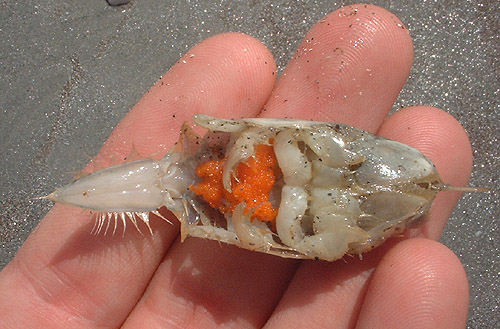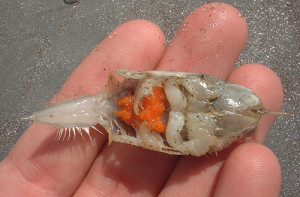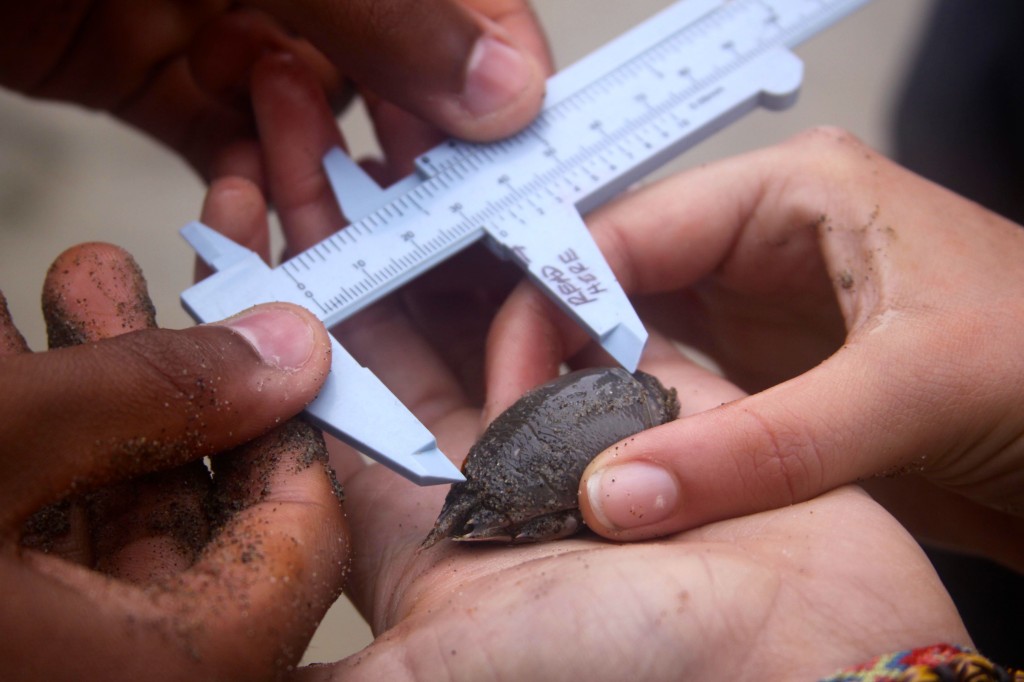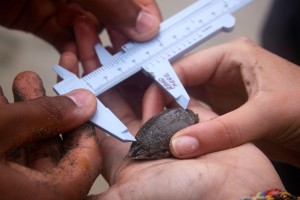
Authors: Amanda, Anne & Hannah

Over the past ten years, the amount of female crabs with eggs has fluctuated greatly. The crabs had fruitful mating seasons in 2009 and 2011, as shown by the graph below. Following the pinnacle of pregnant crab abundance in 2009, Ocean Beach’s sand crab population boomed (see year 2010 in the graph). Most of these crabs were juveniles and possibly offspring of the pregnant females from the year before. This population boom may be due to climate change; recent studies have shown our planet faces challenges that may be devastating for the species that make their home, reproduce, and live in sandy beaches.




































